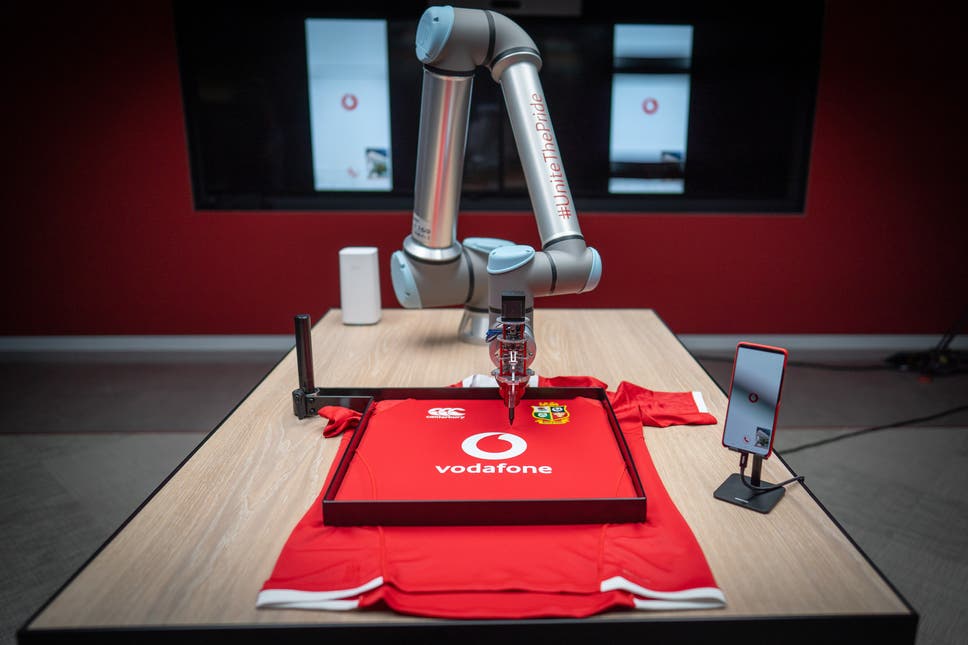The group, led by Professor Muhammed Imran, claims that the teleoperation could support several sectors including manufacturing, healthcare and the arts.
Working at the Scotland 5G Centre’s ‘urban testbed’, the team were able to demonstrate remote 5G manipulation of the robotic arm via a haptic device to complete a series of tasks including writing and drawing.
Haptic devices allow users to touch, feel and manipulate three-dimensional objects in virtual environments via a computer or 5G interface. Haptic feedback is critical in teleoperation as it not only closes the control loop (for accurate manipulation), but also provides information for pressure sensitive tasks executed by the remote robotic arm.
As part of the demonstration a video link over 5G was also used to provide synchronized visual feedback to the remote controller for guided teleoperation.
Prof Imran said: “This successful teleoperation demonstration will support applications across several verticals including, but not limited to, Industry 4.0, healthcare, creative arts, and will be a key enabler for the Internet of Skills paradigm.”
Last month, Vodafone said it had used robotic teleoperation to enable British & Irish Lions Rugby players to complete ‘virtual live shirt signings’ over the Vodafone 5G network while isolating on tour in South Africa.




